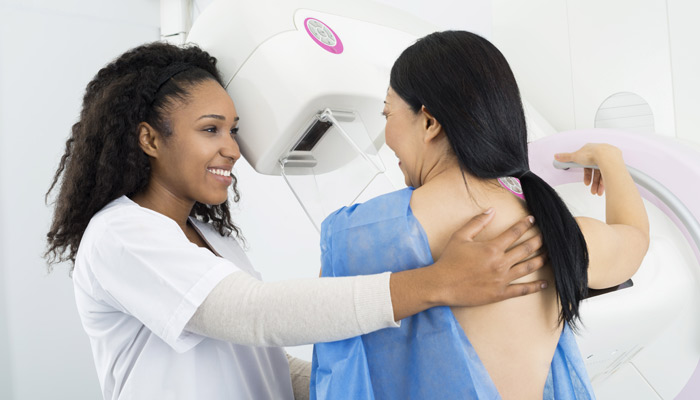|
Now that you’re back to work, school and the daily grind don’t forget to take stock of your own personal health and wellness and go for those oh-so-necessary medical check-ups –and that includes a mammogram.
Apart from the obvious like an annual medical exam and regular eye testing, women should be aware of those tests which can pick up cancers early, giving the chance for early treatment and cure.
A pap smear and a mammogram in particular should be high on your health radar.
Mammograms - x-ray images of your breasts used to screen for breast cancer - are important as they can identify the early signs of the illness before they are visible to the naked eye.
Many women, however, put off going for that potentially life-saving test because they are afraid of what lies in store when they undergo mammography screening.
|
|

|
|
Here’s the inside track if it’s your first mammo. Wear something loose, as you will have to undress from the waist up. The radiology clinic will provide you with a laundered wrap-around gown and the radiographer may also ask you to remove jewellery.
It’s not a particularly comfortable experience but generally it is not painful. Ideally, try to schedule your mammogram for about a week after your monthly menstrual cycle when your breasts are likely to be less tender. If you are extremely sensitive to physical discomfort, you may like to take an over-the-counter pain relief tablet before the procedure but for most women this is not necessary, and the actual mammogram only takes a few minutes.
During the test, your breasts will be compressed one by one between two firm surfaces to spread out the breast tissue. An X-ray then captures black-and-white images which are examined by a doctor looking for evidence of cancer or non-cancerous (benign) conditions that may require further testing, follow-up or treatment.
Don’t stress if you are called back for more tests as this doesn’t necessarily mean you have breast cancer. Usually the follow-up involves more x-rays, an ultrasound or perhaps a biopsy to take a sample of tissue for lab analysis.
Among women of all ages, about one in 10 need additional testing, but most abnormal findings picked up by your mammogram aren't cancerous.
Then, even though it is one of the most commonly diagnosed cancers in women the great news is that breast cancer is also one of the most treatable. Early treatment can often mean the difference between a mastectomy (breast removal) or not.
|
 |
|
Although many women only have their first mammogram around the age of 40, if you have a family history of breast cancer, go earlier. From then on, go every second year until you hit menopause and then every year thereafter, particularly if you are in a high risk category. These risks include being overweight, inactive, drinking a lot of alcohol, eating a poor diet, smoking and being exposed to toxic chemicals.
Our guess is that you are a busy woman so if you wait until you have time for self-care, it may never happen. Prioritise your health and wellness now, and “Think Pink” all year round, not just in the Breast Cancer Awareness Month of October!
|
|

